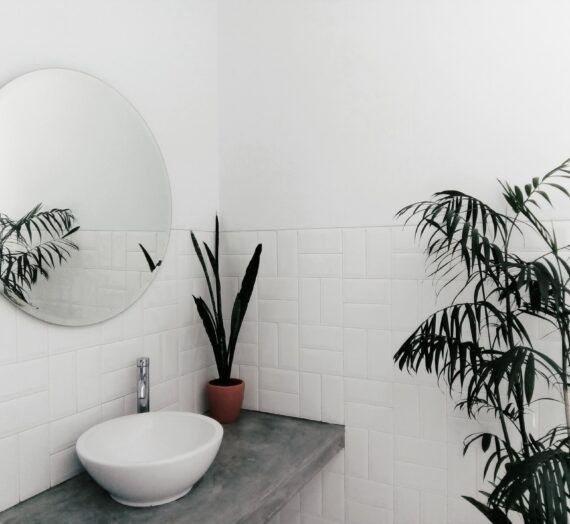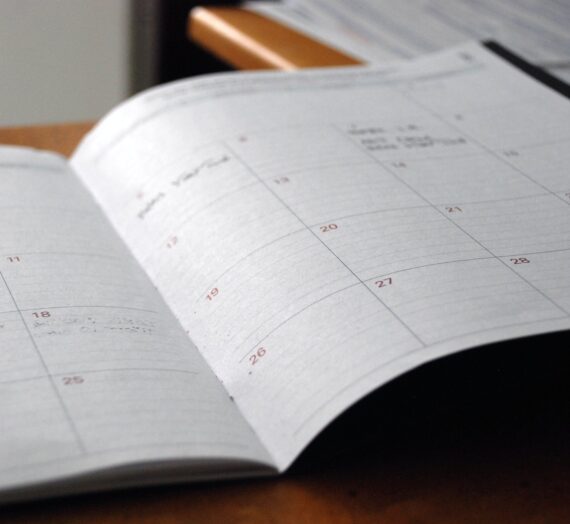If you are beginning to explore a low-waste lifestyle, it can be a bit overwhelming to know where and how to start. Although there are a million ways to begin your low-waste journey, I think that there is no better place to start than in your kitchen. I mean, we all need to eat every day, right?
There are so many simple, low-cost ways to reduce waste in your kitchen. Here are my top 10!
10 Tips for Creating a Low-Waste Kitchen
1. Bring reusable totes, produce bags, and containers to the grocery store
A simple way to reduce the waste in your kitchen is to let less waste in to begin with! A single trip to the grocery store can produce a surprising amount of waste. Between produce bags, grocery bags, and other plastic packaging, it can add up quickly. By bringing your own cloth produce bags, containers for bulk items, and grocery totes, you can significantly reduce the amount of trash and recycling you create.
Pro Tip: Weigh your produce bags and reusable containers on a kitchen scale at home and write the tare weight on them before heading to the store. This will make life much easier for both you and the cashier.
2. Switch to cloth napkins and kitchen towels
Have you ever noticed that paper towels and napkins rip and disintegrate easily? How often have you used more than one napkin to clean yourself up during a messy meal or more than one paper towel to clean the counter after making dinner? This is where their cloth counterparts really shine. You can use one cloth napkin for even the messiest dinner, and a kitchen towel can often be used for an entire week to wipe down counters before needing to be laundered. These items will pay for themselves quickly since you don’t need many, and they can last a long time. Once they are no longer usable, transition them to rags for household projects and cleaning.
Pro Tip: Be sure to wash kitchen laundry separately from your clothing, as cloth napkins and kitchen towels will often have oil or grease on them that could damage your garments.
3. Make a DIY all-purpose cleaner
Most kitchen cleaning products come in plastic bottles and contain harsh chemicals that aren’t really necessary. A quick online search can give you tons of DIY cleaner recipes. Think vinegar infused with lavender and rosemary, lemon, or eucalyptus. Making your own cleaner is inexpensive and allows you to control the scent as well as what ingredients are involved.
Pro Tip: For our kitchen, we use a simple mix of white vinegar and citrus, and it does a fantastic job. Just save your citrus peels, pour white vinegar over them, seal them in a jar and let sit in a dark place for 2 weeks. Strain into a spray bottle and you are good to go!
4. Test out beeswax wraps
Plastic cling wrap is not only annoying, but also wasteful. How many times has the sheet folded over on itself before you were able to use it? Beeswax wraps are an easy, eco-friendly swap. You can buy them in multiple sizes, or even make your own! These wraps can easily last a year and can be used to cover bowls and wrap up produce, cheeses, bread, etc. At the end of their useful life, they can be cut up into strips to be composted or used as fire starters.
Pro Tip: To wash, simply use lukewarm or cool water and mild dish soap and let air-dry. Don’t use them on meat or fish!
5. Ditch plastic brushes
Plastic brushes with plastic bristles may be effective, but there are plenty of other options that work just as well and are much more earth-friendly. Both coconut coir scrubbers and wooden/metal brushes with natural plant bristles are biodegradable and can be composted after their useful lives. Often, wooden brushes with handles offer the option to simply replace the brush head.
Pro Tip: A coconut coir scrubber can last for over a year!
6. Try concentrated dish soap or a dishwashing block
If you read the ingredients of any liquid dish soap, the first one on the list will be water. Why? Well, ingredient lists are organized by the highest to the lowest percentage in a product. For dish soap, water is by far the highest percentage of the liquid. So, why would you spend your hard-earned money on a product that is mostly water when there are simple alternatives? If you want to stick with a liquid, try a concentrated dish soap. There is less water in these formulas and because it is concentrated you won’t need to replace it as often. Ready to make a bigger switch? Using a dishwashing block. Just rub it against a scrubber or cloth to create suds.
Pro Tip: If you tend to use too much dish liquid because it squirts out too quickly, a dishwashing block alleviates this issue!
7. Invest in reusable coffee cups, tumblers, and water bottles
Most of us have known for a long time that bottled water and plastic to-go cups create a lot of waste. Yes, they can be recycled, but wouldn’t it be better to not use plastic to begin with? On a daily basis, I fill up my aluminum water bottle and put my coffee in a glass and silicone travel mug before I head out the door. These are two things that I nearly always have with me. By making sure I have both of these before I head out the door, I can avoid using any unnecessary plastic for my drinks throughout the day.
Pro Tip: A lot of reusable bottles, tumblers, and cups are plastic. Look for aluminum or glass vessels for longer lasting, more eco-friendly alternatives.
8. Use metal straws
I often have not one, but two different metal straws in my purse at any given time. That way, even if I forget one at home, I have a backup. I am prone to impromptu coffee runs, so keeping a straw or two handy really helps to cut down on my plastic use and also helps me to avoid using paper-based straws, which tend to disintegrate long before I finish my beverage. The best part? They barely take up any room! If you want something that is exceptionally travel-friendly, look into a collapsible metal straw. There are many of these that come with their own carrying cases that can be hooked to your keyring for easy access.
Pro Tip: If you have sensitive teeth, you may find that metal straws conduct the cold a bit too well. All you need to do is purchase a silicone straw tip and you will be all set!
9. Embrace bulk spices and refillable spice jars
How often have you bought way more of a particular spice than you actually needed, just because that is the size container it came in, and then had it go stale before you have even used half of it? Although it isn’t the case everywhere, more and more grocery stores are beginning to implement bulk spice sections. This allows you to purchase the amount you need, when you need it, so that spices stay fresh. To avoid using the plastic bags that are often provided, bring your own spice jars! This allows you to reuse the containers indefinitely.
Pro Tip: If available, always opt for the whole spice rather than pre-ground. This will allow the spices to stay fresh longer. Once you start grinding your spices at home, you will see that it makes a huge difference in flavor!
10. Start composting
Composting is the ultimate low-waste kitchen tip. The United States of America alone creates hundreds of millions of tons of food waste each year. You can reduce your food waste by learning how to store produce properly and to use scraps for vegetable stock, but sometimes food just goes bad before you expect it to. Rather than toss the offending food, try composting. It keeps the food waste out of the dump and can be used in your yard or garden.
Pro Tip: Instead of keeping your compost bin on your kitchen counter, find a home for it in your freezer. This keeps your kitchen scraps out of the way and ensures they won’t start to smell as they decompose.

If you are lucky, you may have a shop in your city that carries low-waste supplies. If not, don’t worry! There are many online stores that offer curated low-waste items. Here are a few of my favorites:
The Good Fill (Also has a physical shop in Nashville, TN)
Greenhouse Mercantile (Also has a physical shop in Newnan, GA)
The Pale Blue Dot (also has a physical shop in Hamilton, ON)
Package Free Shop (Also has physical shops in NYC and Brooklyn, NY)
The Refill Shoppe (Also has a physical shop in Ventura, CA)
No Tox Life (Also has a physical shop in Los Angeles, CA)
Remember that as you are creating your low-waste kitchen, you don’t have to implement all of these ideas immediately. Pick one or two that will be easy to integrate, and go from there. The goal isn’t to overwhelm yourself! The goal is to make small changes that you can work into your long-term lifestyle. Low-waste living is a journey. Take your time to find what works for you.
Featured Photo by Edgar Castrejon on Unsplash




